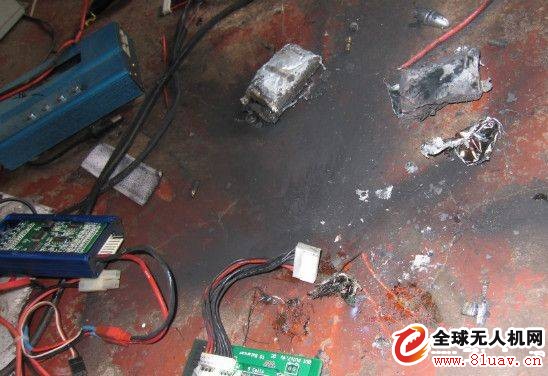The correct use of lithium batteries
Before we talked about some basic concepts about lithium batteries, now let's talk about more practical issues and teach you how to use lithium batteries correctly.
At present, lithium battery has become the mainstream of RC battery. In daily use, we are mainly exposed to three steps of charging, discharging and storing. Below we will explain one by one, but before that, everyone will first appreciate the explosion caused by improper use. Lithium battery Jun.

The correct use of lithium battery for drones (data)
Charging articles:
After we get a lithium battery, don't rush to charge it. This is blind. Before using this, you must carefully read the battery specifications. The charging current, voltage and charging temperature must not exceed the standards written in the specification. So what can happen if the standard written on the specification is exceeded?
1. Using more than the recommended current charging may cause problems with the battery's charge and discharge performance, mechanical properties and safety performance, and may cause heat or leakage, which will greatly reduce battery life.
2. The charging voltage is higher than the recommended voltage, which may cause the battery to be overcharged. Generally, it is caused by the user's wrong charging method (such as DC charging). The figure shows the most serious consequences of using DC overcharging.
3. Charging temperature, first of all, the charging temperature here refers not to the temperature generated during battery charging, but the ambient temperature during battery charging. When the battery surface temperature is found to be abnormal, the charging should be terminated immediately.
Discharge articles:
1. Discharge current: The discharge current must not exceed the maximum discharge current specified by the battery (the formula is “mA ÷ 1000 and then multiplied by C number†= limit discharge current.) Excessive current discharge will lead to a sharp drop in capacity and cause the battery to overheat and expand. . In the popular way of the mold friends, don't pump the battery too hard, so even if it is not put, the battery life will be significantly reduced.
2. Discharge temperature: The battery must be discharged within the operating temperature range specified in the data sheet. When the surface temperature of the battery exceeds 60 ° C, temporarily stop using it until the battery cools to room temperature.
3. Over-discharge: Over-discharge will cause devastating damage to the battery, so it is best not to make the voltage of the single-cell battery lower than 3.7V during discharge.
Battery storage articles:
The battery should be stored in a cool environment. When storing the battery for a long time (more than 3 months), it is recommended to place it in an environment with a temperature of 10-25 ° C and a low temperature and no corrosive gas. The battery is charged and discharged every 3 months during long-term storage to maintain battery activity and ensure that each cell voltage is in the range of 3.85V.
Finally, if a battery is not intended for use in the short term, remember not to fully charge it before saving it, which makes it easy to have a battery drum during the storage process. The best storage method is that the optimal storage voltage is about 3.8V for a single piece. (AOPA Cloud: Guo Xin)
The correct use of drone lithium battery
Professional DC Charging Station manufacturer is located in China, including DC Ev Charger,DC Charging Pile,DC Fast Charger, etc.
DC Charging Station,DC Ev Charger,DC Charging Pile,DC Fast Charging
Shenzhen Hongjiali New Energy Co., Ltd. , https://www.hjlcharger.com